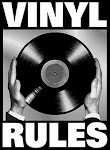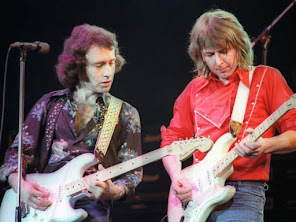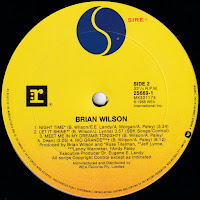.
Before things get too serious here at Rock On Vinyl, I thought it might be fun to post a song / album at the end of each month, that could be categorized as being either Weird, Obscure, Crazy or just plain Korny.
The Avengers was a British espionage television series that aired from 7 January 1961 to 21 April 1969. It initially focused on David Keel (Ian Hendry), aided by John Steed (Patrick Macnee). Ian Hendry left after the first series; Steed then became the main character, partnered with a succession of assistants. His most famous assistants were intelligent, stylish, and assertive women: Cathy Gale (Honor Blackman), Emma Peel (Diana Rigg), and Tara King (Linda Thorson). Dresses and suits for the series were made by Pierre Cardin.The series screened as one-hour episodes for its entire run. The first episode, "Hot Snow", aired on 7 January 1961. The final episode, "Bizarre", aired on 21 April 1969 in the United States, and on 17 May 1969 in the United Kingdom.
The Avengers was produced by ABC Weekend TV, a contractor within the ITV network. After a merger with Rediffusion London in July 1968, ABC Weekend became Thames Television, which continued production of the series, subcontracted to ABC Television Films. By 1969, The Avengers was shown in more than 90 countries. ITV produced a sequel series, The New Avengers (1976–1977), with Patrick Macnee returning as John Steed, and two new partners. In 2004 and 2007, The Avengers was ranked No. 17 and No. 20 on TV Guide's Top Cult Shows Ever.
The Avengers was marked by different eras as co-stars came and went. The only constant was John Steed, played by Patrick Macnee.
 |
| Patrick MacNee as The Avenger's John Steed |
Series 2-3 (1962-64)
The first episode broadcast in the second series (1962) introduced Steed's female partner who would change the show into the format for which it is most remembered. Honor Blackman played Mrs. Cathy Gale, a self-assured, quick-witted anthropologist who was skilled in judo and had a passion for leather clothes.
Catherine Gale was unlike any female character seen before on British TV, and she became a household name, mainly for her all leather outfit which she regularly wore during the show.
During the first series, there were hints that Steed worked for a branch of British Intelligence, and this was expanded in the second series. Steed initially received orders from different superiors, including someone referred to as "Charles", and "One-Ten" (Douglas Muir). By the third series, the delivery of Steed's orders was not depicted on screen or explained. The secret organisation to which Steed belongs is shown in "The Nutshell", and it is Cathy Gale's first visit to their headquarters.
During the Gale era, Steed was transformed from a rugged trenchcoat-wearing agent into the stereotypical English gentleman, complete with Savile Row suit, bowler hat and umbrella, with clothes later designed by Pierre Cardin. The bowler and umbrella were soon revealed to be full of tricks, including a sword hidden within the umbrella handle and a steel plate concealed in the hat.
With his impeccable manners, old-world sophistication and vintage car, Steed came to represent the traditional Englishman of an earlier era.
By contrast, Steed's partners were youthful, forward-looking and always attired in the latest mod fashions. Catherine Gale's innovative leather outfits suited her many athletic fight scenes. Honor Blackman became a star in Britain with her black leather outfits and boots (nicknamed "kinky boots") and her judo-based fighting style. Patrick Macnee and Honor Blackman even released a novelty song called "Kinky Boots". Some of the clothes seen in The Avengers were designed at the studio of John Sutcliffe, who published the AtomAge fetish magazine.
Series scriptwriter Dennis Spooner said that the series would frequently feature Steed visiting busy public places such as the main airport in London without anyone else present in the scene: "'Can't you afford extras?' they'd ask. Well, it wasn't like that. It's just that Steed had to be alone to be accepted. Put him in a crowd and he sticks out like a sore thumb! Let's face it, with normal people he's weird. The trick to making him acceptable is never to show him in a normal world, just fighting villains who are odder than he is!"
Series 4-5 (1965-67)
With Honor Blackman's exit in 1964 to pursue other acting roles: the Bond girl Pussy Galore in Goldfinger (1964) and Julia Daggett in Shalako (1968), a new female partner for John Steed needed to be found. After more than 60 actresses had been auditioned, Diana Rigg's screen test with Patrick Macnee showed that the two immediately worked well together. Mrs. Emma Peel (Diana Rigg) debuted in October 1965 and her character name in the show was derived from a comment by writers, during development, that they wanted a character with "man appeal".
The first episode broadcast in the second series (1962) introduced Steed's female partner who would change the show into the format for which it is most remembered. Honor Blackman played Mrs. Cathy Gale, a self-assured, quick-witted anthropologist who was skilled in judo and had a passion for leather clothes.
 |
| Steed & Gale |
During the first series, there were hints that Steed worked for a branch of British Intelligence, and this was expanded in the second series. Steed initially received orders from different superiors, including someone referred to as "Charles", and "One-Ten" (Douglas Muir). By the third series, the delivery of Steed's orders was not depicted on screen or explained. The secret organisation to which Steed belongs is shown in "The Nutshell", and it is Cathy Gale's first visit to their headquarters.
During the Gale era, Steed was transformed from a rugged trenchcoat-wearing agent into the stereotypical English gentleman, complete with Savile Row suit, bowler hat and umbrella, with clothes later designed by Pierre Cardin. The bowler and umbrella were soon revealed to be full of tricks, including a sword hidden within the umbrella handle and a steel plate concealed in the hat.
 |
| Steed in his Pierre Cardin Suit |
By contrast, Steed's partners were youthful, forward-looking and always attired in the latest mod fashions. Catherine Gale's innovative leather outfits suited her many athletic fight scenes. Honor Blackman became a star in Britain with her black leather outfits and boots (nicknamed "kinky boots") and her judo-based fighting style. Patrick Macnee and Honor Blackman even released a novelty song called "Kinky Boots". Some of the clothes seen in The Avengers were designed at the studio of John Sutcliffe, who published the AtomAge fetish magazine.
Series scriptwriter Dennis Spooner said that the series would frequently feature Steed visiting busy public places such as the main airport in London without anyone else present in the scene: "'Can't you afford extras?' they'd ask. Well, it wasn't like that. It's just that Steed had to be alone to be accepted. Put him in a crowd and he sticks out like a sore thumb! Let's face it, with normal people he's weird. The trick to making him acceptable is never to show him in a normal world, just fighting villains who are odder than he is!"
Series 4-5 (1965-67)
 |
| Dianna Rig as 'Emma Peel' |
In contrast to the Gale episodes, there is a lighter, comic touch in Steed's and Mrs. Emma Peel's interactions with each other and their reactions to other characters and situations. Earlier series had a harder tone, with the Gale era including some quite serious espionage dramas. This almost completely disappeared as Steed and Mrs. Emma Peel visibly enjoy topping each other's witticisms. The layer of conflict with Catherine Gale—who on occasion openly resented being used by Steed, often without her permission—is absent from Steed's interaction with Emma Peel.
Also, the sexual tension between Steed and Catherine Gale is quite different from the tension between Steed and Emma Peel. In both cases, the exact relationship between the partners is left ambiguous, although they seemed to have carte blanche to visit each other's homes whenever they please, and it is not uncommon for scenes to suggest that Steed had spent the night at Catherine Gale's or Emma Peel's home, or vice versa. Although nothing "improper" is displayed, the close chemistry between Steed and Mrs. Emma Peel constantly suggests intimacy between the two.
According to Patrick Macnee in his book The Avengers and Me, Diana Rigg disliked wearing leather and insisted on a new line of fabric athletic wear for the fifth series. Alun Hughes, who had designed clothing for Diana Rigg's personal wardrobe, was suggested by the actress to design Emma Peel's "softer" new wardrobe. Pierre Cardin was brought in to design a new wardrobe for Macnee. In the US, TV Guide ran a four-page photo spread on Diana Rigg's new "Emmapeeler" outfits (10–16 June 1967). Eight tight-fitting jumpsuits were created, in a variety of bright colours and made of the stretch fabric crimplene.
The Avengers began filming in colour for the fifth series in 1966. It was three years before Britain's ITV network began full colour broadcasting.
Science fiction and fantasy elements (a style later known as Spy-Fi) also began to emerge in storylines. The duo encounters killer robots ("The Cybernauts"), telepaths ("Too Many Christmas Trees") and giant alien carnivorous plants ("The Man-Eater of Surrey Green"). Stories were increasingly characterised by a futuristic, science-fiction bent, with mad scientists and their creations wreaking havoc. The duo dealt with being shrunk to doll size ("Mission... Highly Improbable"), pet cats being electrically altered to become ferocious and lethal "miniature tigers" ("The Hidden Tiger"), killer automata ("Return of The Cybernauts"), mind-transferring machines ("Who's Who???") and invisible foes ("The See-Through Man").
Diana Rigg was initially unhappy with the way she was treated by the show's producers. During her first series, she learned that she was being paid less than the cameraman. She demanded a raise to put her more on a par with her co-star, or she would leave the show. The producers gave in, thanks to the show's great popularity in the US. At the end of the fifth series in 1967, Diana Rigg left to pursue other projects. This included following Honor Blackman to play a leading role in a James Bond film, On Her Majesty's Secret Service, as James Bond's wife Tracy Bond.
The Avengers began filming in colour for the fifth series in 1966. It was three years before Britain's ITV network began full colour broadcasting.
 |
| The Cybernauts |
Diana Rigg was initially unhappy with the way she was treated by the show's producers. During her first series, she learned that she was being paid less than the cameraman. She demanded a raise to put her more on a par with her co-star, or she would leave the show. The producers gave in, thanks to the show's great popularity in the US. At the end of the fifth series in 1967, Diana Rigg left to pursue other projects. This included following Honor Blackman to play a leading role in a James Bond film, On Her Majesty's Secret Service, as James Bond's wife Tracy Bond.
Series 6 (1968-69)
When Diana Rigg left the series in October 1967, the British network executives decided that the current series formula, despite resulting in popular success, could not be pursued further. Thus, they decided that a "return to realism" was appropriate for the sixth series (1968–69).
 |
| Linda Thorson as 'Tara King' |
Tara debuts in dynamic style: when Steed is called to Headquarters, he is attacked and knocked down by trainee agent Tara King, who mistakes him for her training partner.
The revised series continued to be broadcast in the US. The episodes with Linda Thorson as Tara King proved to be highly rated in Europe and the UK. However, in the US, the ABC network chose to air it opposite the number-one show in the country at the time, Rowan and Martin's Laugh-In. Steed and Tara King could not compete, and the show was cancelled in the US. Without this vital commercial backing, production could not continue in Britain either, and the series ended in May 1969.
[Extracts from wikipedia]
This month's WOCK post consists of FLACs ripped from a 12" Single release (thanks to Sunshine) which features picture labels and a glossy green cover (artwork included).
The Avengers was one of my favourite T.V shows during the late 60's and early 70's (re-runs), especially series 4-5 featuring Emma Peel. As an impressionable and hormonal teenager during this time, the show contained all of the attributes and sex appeal that a young boy desired, and Emma Peel certainly fitted the bill.
The single 'Kinky Boots' definately ticks the K box for this month's WOCK on Vinyl and although the pressing used is from 1983, the original recording was made in 1964 making it rather Obscure as well.
And because this 12" release also features the Theme Music from The Avengers show, it makes it even more desirable, in my opinion. I hope this month's WOCK post brings back fond memories for you as much as it did for me.
Track Listing
01 Kinky Boots
02 Let's Keep It Friendly
03 The Avengers Theme
Kinky Boots Link (46Mb)















.jpg)


.jpg)















%20and%20his%20roommate%20(Bill%20Murray)%20.jpg)

%20&%20Dustin%20Hoffman%20(Dorothy).jpg)
%20takes%20a%20liking%20to%20Dorothy.jpg)
%20with%20Dorothy.jpg)




























